5 Types of Tripods and Their Differences (With Pictures)
Last Updated on
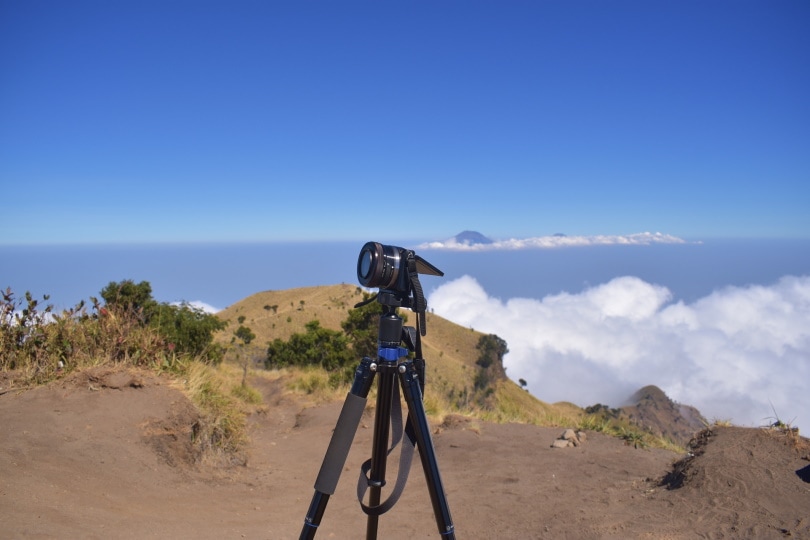
If you’re interested in photography, astronomy, birdwatching, or videography, chances are that you’ll want a tripod. But with so many applications that they are useful for, it’s no surprise that there’s more than one type of tripod out there.
That’s why we created this guide that goes over five different tripod options. We also highlighted a few different tripod head options, as these will significantly affect what you can and can’t use your tripod for!
So, keep reading, as we walk you through everything that you need to know and get you on the right path to picking out your perfect tripod.
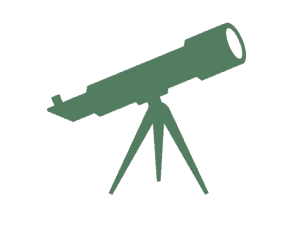
The 5 Types of Tripods and Their Differences
1. All-in-One Tripods

| Cost | Low |
| Weight | Medium weight |
| Uses | Beginner photography |
If you’re looking to purchase your first tripod, there’s a good chance that you’re going to go with an all-in-one option. It will give you a bit of each feature, though it won’t excel in any one area.
If you’re a serious photographer, it’s only going to be a matter of time until you realize that there are more features that you want. Still, an all-in-one option enables you to discover precisely what you need, and since it’s available for an affordable price, you don’t need to break the bank to do so.
- Affordable
- Wide range of applications
- Easy to use and get started with
- Limited features
- Not the best construction
2. Travel Tripods
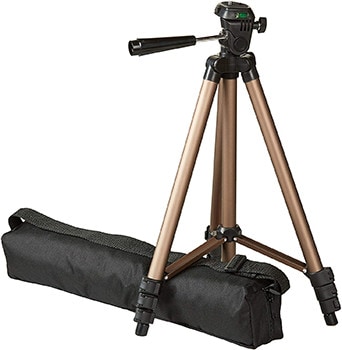
| Cost | Low to high |
| Weight | Light |
| Uses | Photography on the go |
When you’re traveling or vacationing, the last thing that you want to do is pack up a heavy tripod. That’s where travel tripods come into play. They’re lightweight, which makes them easy to take on hikes or vacations, and they often collapse down into something easy to store.
There are low-priced plastic options, but you should go with a carbon-fiber travel tripod if you want something durable. Travel tripods don’t have all the features that other tripods have, but they have enough to dramatically improve your on-the-go photographs.
Most travel tripods will come with adjustable legs and versatile footing on those legs. This makes them easier to set up and keep level on uneven terrain, which is a huge perk when you’re traveling and can’t always find the perfect spot to set up a traditional tripod.
- High-end and affordable options available
- Easy to transport
- Lightweight
- Durable options are expensive
- Limited features
3. Studio Tripods
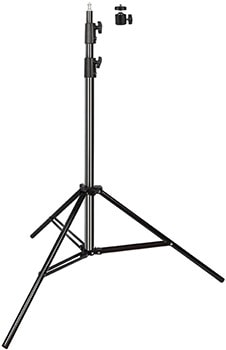
| Cost | High |
| Weight | Heavy |
| Uses | Professional photography, studio setting photography |
If you’re a professional photographer setting up your studio, you want to get a studio-specific tripod. It’s heavy, but it offers maximum stability for the highest-quality photos possible.
Studio tripods often come with tons of features, like mountable lights, remote functionality, and more. However, they’re not easy to transport from location to location, and they don’t always have the most versatile legs for uneven terrain.
- Professional-level product
- Maximum stability
- Tons of studio features available
- Expensive
- Heavy
- Low portability and adaptability
4. Pocket Tripods

| Cost | Low |
| Weight | Low |
| Uses | Beginner photography, photography on the go |
Have you ever wanted to set up the perfect selfie but not had a way to do it? This is where a pocket tripod excels. They’re small and lightweight enough to fit into a bag, pocket, or even a vehicle’s glove box.
They’re usually affordable, but they don’t typically have a ton of features. Since they’re not full-length, you’ll also need to have somewhere to set them up, like on a table.
Still, they’re a great choice if you always want to have something on you to get the perfect photo.
- Portable (fits into a bag)
- Extremely affordable
- Easy to set up and use
- Limited features
- You need a table or something to put it on
5. Videographer Tripod

| Cost | High |
| Weight | Light to heavy |
| Uses | Videography |
Compared to photography tripods, videographer tripods are a bit different in the way that the heads are set up and how they can move. Due to these advanced features, videographer tripods are typically expensive.
They can be either lightweight or heavy, depending on the exact features that you go for, but one of their top-selling points is that you can move the camera around in a steady manner. This is a huge difference from a photographer’s tripod, where the whole goal is to not move the camera at all.
- Easy to take moving shots
- Stable platforms
- Lightweight and heavy options are available
- Expensive
- Not the best choice for photography

Picking a Tripod Head
Just because you know what kind of tripod you want doesn’t mean you’re done making decisions about what to get. The other factor that you need to consider when picking out a tripod is the type of head to put on it.
Here are four different tripod head types and what you can and can’t do with each.
Ball Head
The ball head is one of the most popular tripod head styles out there and for good reason. The mount sits on top of a ball, and you can rotate this ball to about any angle.
This enables you to set up your camera however you want it, and you can adjust to uneven terrain. But while there’s much to love about the ball head, it’s not perfect. For one thing, cheap models will often fall over with the camera’s weight.
Second, it takes a bit of work to get a level shot, and you need to do this every time. Even after you get it level, any adjustment in any direction can throw it off. This can make ball head tripods a pain to work with, even if they do give you maximum functionality.
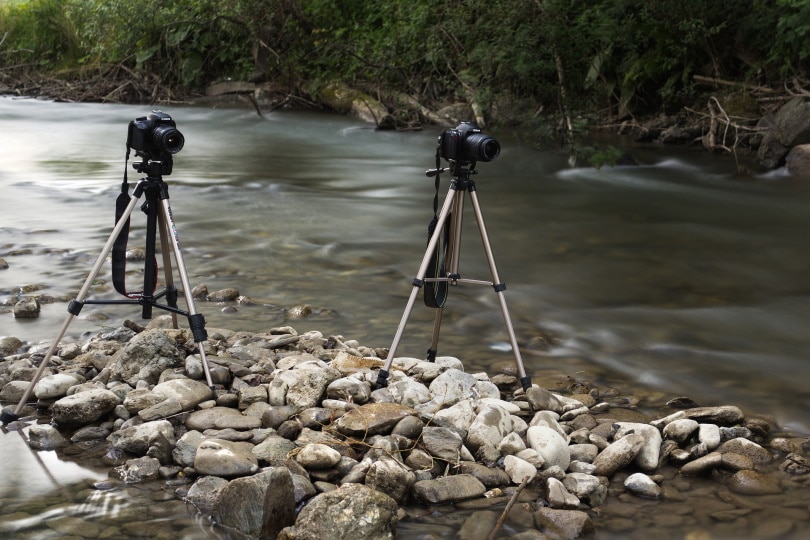
Pan-and-Tilt Tripod Head
Pan-and-tilt tripod heads only let you adjust the angle in two ways: up and down and side to side.
You can also change each angle individually. So, when you do get the camera level, all you have to do is make the side-to-side adjustment if you’re trying to capture a different area. This is a huge perk if you’re taking panoramic shots.
You can also use pan-and-tilt tripods to create videos, but they’re not necessarily the ideal for that. You won’t be able to capture every possible angle, and you’ll often have to make two adjustments to move the camera where you want it.
Related Read: Tripod Ball Head vs. Pan Head: Which Is Better?
Fluid Head
If you’re serious about videography, chances are that you want a fluid head tripod setup. It’s essentially a pan-and-tilt tripod, but it uses hydraulics to give you the smoothest motion possible.
This enables you to get perfect moving shots with a video camera. However, if you’re only using this tripod with a regular camera, there’s no reason to spend the extra money for smoother motion. Fluid head tripods are expensive, and if you’re only taking still photographs, you won’t get any advantages with this setup.
Gimbal Head
The gimbal head is a fan favorite for birders and astrophotographers because they can start with the camera in a vertical position. It can typically handle more weight than a standard tripod too, which is a big deal if you have a heavy setup.
A gimbal head tripod enables you to adjust it in a rotational way vertically and horizontally, so you can get a wide range of shots — as long as they’re vertical.
Related Read: Aluminum vs. Carbon Fiber Tripod – Which Is Better?
•What are the Ideal Settings for Indoor Photography?
•You might also like: When Is the Golden Hour & What Is It? – Photography Basics Explained

Conclusion
Tripods can significantly improve your ability to complete different tasks with a camera or a scope, and getting the right tripod for the job is the first step. Now that you know more about the options out there, you can head out and get your first tripod with confidence.
Just remember that your first tripod doesn’t need to be your last one, so feel free to try new things and get a feel for everything before purchasing a top-of-the-line option!
Featured Image Credit: liko Sunawang, Pixabay
About the Author Robert Sparks
Robert’s obsession with all things optical started early in life, when his optician father would bring home prototypes for Robert to play with. Nowadays, Robert is dedicated to helping others find the right optics for their needs. His hobbies include astronomy, astrophysics, and model building. Originally from Newark, NJ, he resides in Santa Fe, New Mexico, where the nighttime skies are filled with glittering stars.
Related Articles:
Monocular vs Telescope: Differences Explained (With Pictures)
Holy Stone Drone Review of 2024 – Pros, Cons, and Verdict
Ultraviolet Light vs Black Light: What’s the Difference?
Light Waves vs. Sound Waves: The Key Differences
Infrared vs. Thermal Cameras: How Are They Different?
Far Infrared vs Near Infrared: What’s The Difference?
Mottled Duck vs. Mallard vs. Black Duck: What’s the Difference?
Shutter Speed vs Frame Rate: Pros, Cons, & Difference
